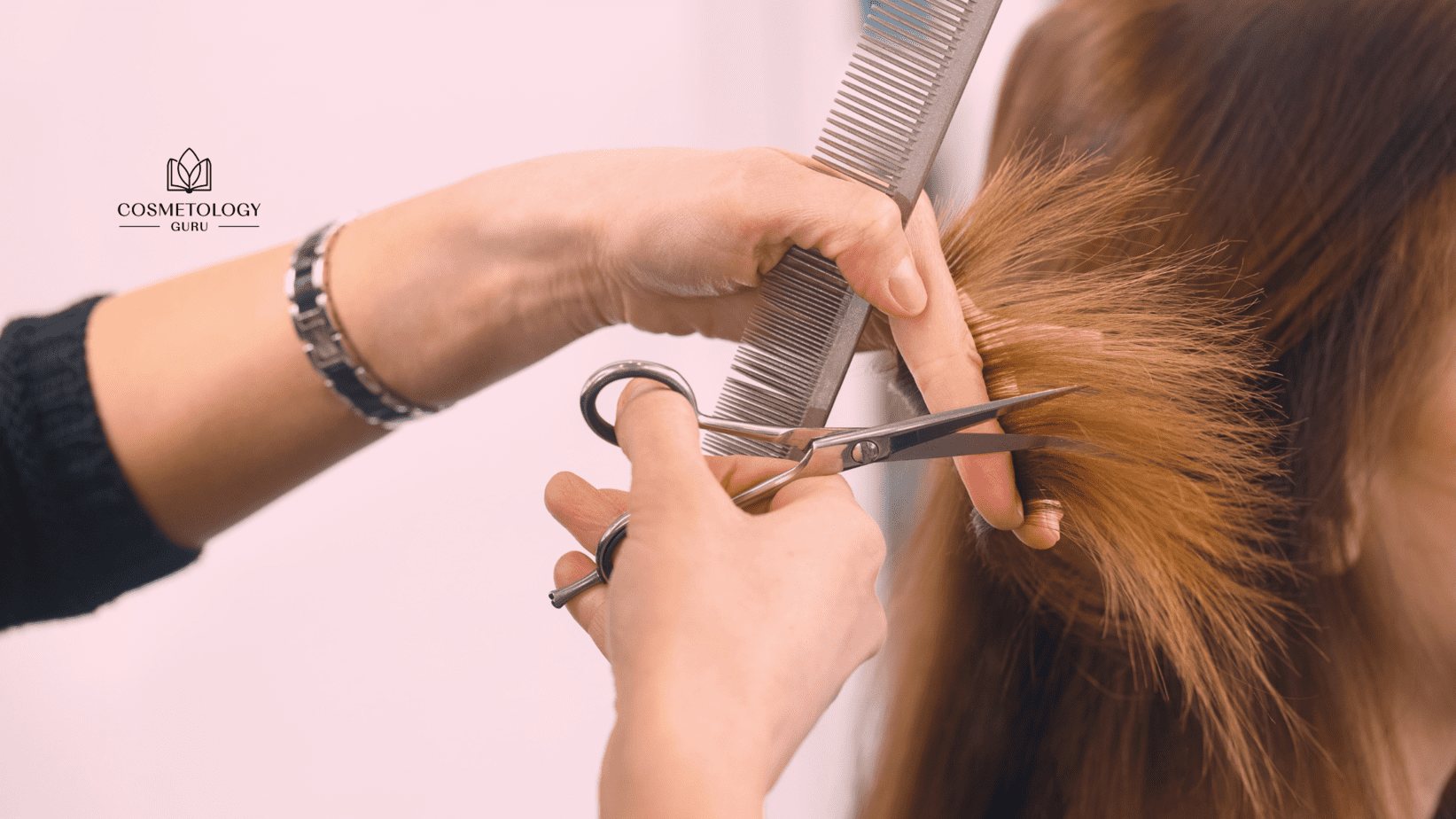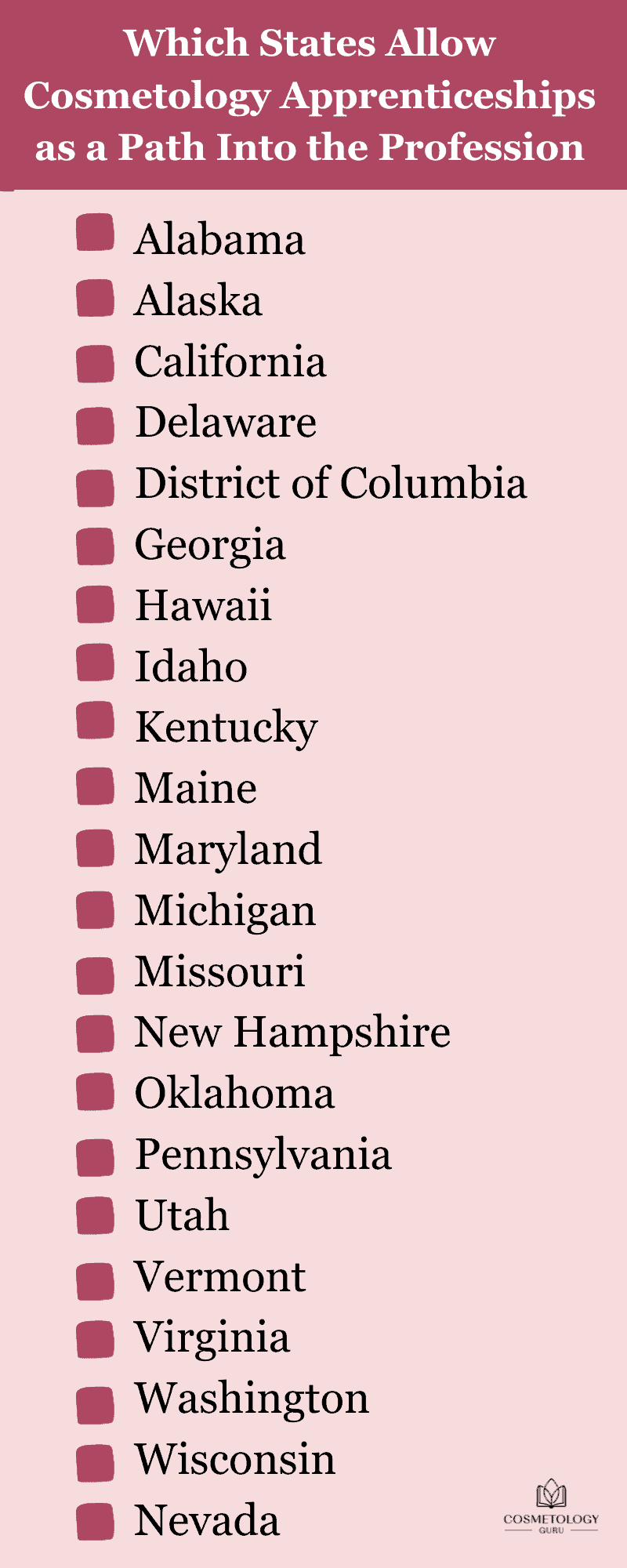Sponsored
Do you know what kind of learning style works best for you? Perhaps you learn best by reading from a textbook or working and studying in a group. Information might make more sense to you by doing things hands-on or working one-on-one with an instructor.
If you’re thinking about becoming a licensed cosmetologist, there are two routes to earning your degree: A traditional classroom, and a cosmetology apprenticeship. Both lead to state licensure for cosmetology, which is required before you can legally practice cosmetology. Both have benefits and cons; however, having the choice means you can decide which suits your learning style the best.
What is a Cosmetology Apprenticeship?
Like traditional schooling, a cosmetology apprenticeship requires that you meet core learning and skills goals and complete the requirements set forth by your state for licensure.
The difference is that your learning takes place in a salon setting, rather than in a beauty school.
Some of the topics you can expect to cover in an apprenticeship include:
- Cosmetology laws and rules
- Professional development
- Cosmetology Salon Industry Management
- Customer relations
- Scalp and Hair Care
- Essential beauty education and skills
- Theory
A salon participating in an apprenticeship program must teach the topics required by their state. While the backbone of cosmetology is similar, core requirements will differ from state to state. Your state’s Board or Division of Health will have more information on the requirements.

How Long does a Cosmetology Apprenticeship Take?
Time and cost are considerations students make when deciding between a college program and apprenticeship. Traditional classroom learning generally requires 1500 hours of instruction before you may take the cosmetology licensing exam. Apprenticeships are roughly one and a half to two times longer, depending on state requirements.
For example, the State of Michigan requires only 1500 hours of instruction in a classroom setting, while apprentices must complete 1,920 hours of training which must be completed in 24 months.
Cosmetology schools can cost upwards of $20,000 depending on the region. Apprenticeships generally do not cost anything, except for any state fees the student may be required to pay to file an apprenticeship application, and application for licensure.
Finding a Cosmetology Apprenticeship
At one time, apprenticeships were the gold standard way of learning a trade or skill. Cosmetology apprenticeship programs are approved courses of study with a contract between a student and a licensed cosmetologist, in a licensed salon. You’ll trade a classroom setting for a real-life setting in which you can observe professionals using their skills in real-time.
Not all salons offer apprenticeships, so you’ll have to do some research of salons that interest you to see if they participate. A salon must have a special permit in order to offer apprenticeships and must follow state guidelines for teaching you what you need to know.

How Will You Spend Your Time?
Your time as an apprentice is generally split three ways in order to prepare you to take your state’s cosmetology exam:
- Hours of curriculum learning
- Training hours (learning practical skills)
- Hours spent serving clients (hands-on practice)
As an apprentice, you’ll shadow your proctor and observe what he or she is doing. You’ll be exposed to whatever services the client is asking for that day. This differs from a traditional classroom where a set curriculum is followed in a set timeframe.
This method of learning isn’t for everyone, so it’s important to consider if it’s the right environment to help you best learn the required skills. You can feel out how an apprenticeship might work for you by asking a participating salon if you could shadow a cosmetologist for a day or sit down and talk about how your learning as an apprentice would be structured.
Which States Allow It as a Path Into the Profession
Not all states support cosmetology apprenticeships. Check with the state board of cosmetology in the state you’d like to take your training to find out if apprenticeship is allowed, and what the requirements are. The following states currently allow cosmetology apprenticeships:

How It Differs From Going to Beauty School
Beauty schools follow a set curriculum to educate students in the skills they need to work as a cosmetologist and prepare them for their state licensing exam. These traditional courses are very structured, so students know what to expect and what is expected of them. As well, they are designed to move students through the program as quickly as possible while still preparing them for the demands and skills of the job.
Apprenticeships have oversight, but don’t necessarily work from a curriculum. Your proctor must follow state guidelines but can instruct you however he or she sees fit. Students and proctors must complete progress reports for their state to show competence and that the student is meeting educational milestones.
You must also take exams to prove competency during the apprenticeship. In a traditional setting, a program director or instructor may oversee that all requirements and milestones are being met. In an apprenticeship, it’s the responsibility of the student and the proctor.

Will You Still Learn the Theory?
Traditional cosmetology courses cover the theory of the profession, as well as the skills needed to perform the job. Theory tells you why something works the way it does. For instance, how hair color works on and affects the hair, or the science behind chemicals used in a salon.
Theory is important because it teaches you the ‘why’ and not just the ‘how,’ which gives you a better understanding of how products work on the hair and skin.
Not all apprenticeships go into theory. Some states require that you take a class on theory after your apprenticeship is completed. For instance, the State of Wisconsin requires that apprentices take an outside course on theory before sitting for the state licensing exam.
Both salons and beauty schools have a poor record of teaching the theory properly – which is why only 51% of students pass their written exam! Check out our study guide, and learn why our students’ pass rate is 98.5%!
Do you still need classroom time?
While both types of learning prepare students for the workforce, an apprenticeship may have a less rigid curriculum, simply because a student is learning one-on-one, and often hands-on, instead of in a group of other students. Because you’re learning and working in a salon, you’ll be exposed to more real-life scenarios and learning opportunities than you may get in a classroom setting.
Choosing an apprenticeship doesn’t mean you’ll never set foot in a classroom. Some states require students to complete some hours of formal classroom instruction in addition to the apprenticeship.
For instance, California requires you to take a pre-apprentice course prior to becoming an apprentice. Washington D.C. requires students to complete 500 hours of classroom theory hours in addition to the required 1500 apprenticeship hours.
Job Prospects
Jobs for cosmetologists are growing. According to Chron.com, the number of jobs for cosmetologists will increase by 13% through 2022. As beauty services expand, the need for qualified cosmetologists will continue to grow!
Passing your state licensing exam to work as a cosmetologist is the hallmark of employability in the profession. You can’t provide beauty services without a license, and you can’t sit for the license exam unless you’ve successfully completed your coursework.
Students who earn their education through apprenticeship, and who also pass their required exams and licensing are just as employable as those who graduate from a traditional program.

How Much Do Apprentices Get Paid?
Some apprenticeships are paid, and some are not. Apprentices are likely to earn less than minimum wage because they can earn unlimited tips, according to the U.S Department of Labor. The average annual income for apprentice cosmetologists was $13,000 in 2013, which breaks down to about $6.25 per hour for a forty-hour work schedule.
How much you get paid varies by region. For example, California offers a higher apprenticeship income of $15,000, while those in the Midwest earn between $10,000- $15,000. Larger cities have overall higher earning potential.
What Hours Do Apprentices Work?
Each state decides how many hours an apprentice cosmetologist may work. For instance, The State of Wisconsin mandates that you cannot train for more than 7 hours per day or more than 40 hours per week.
Some states require that you have a certain amount of training hours per month. For Wisconsin, apprentices must accumulate no less than 80 hours per month, up to a maximum of 120 hours per month.
The salon you apprentice for will also have its own requirements. If the salon is open nights, holidays and weekends, you can likely expect to be working and training during some of those hours, as well. Keep in mind that being flexible and willing to align with the salon’s needs will help you earn the hours needed for your training.
Related Reads
How Hard Is Cosmetology School? What You Need To Know Before You Enroll
10 Tips And Tricks To Get The Most Out Of Cosmetology School


